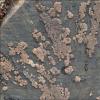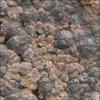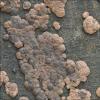
24-12-2025 17:08
Hulda Caroline HolteHello, I have found this propoloid ascomycete on

21-12-2025 09:32
Hello.A tiny ascomycete found embedded in wood in

21-12-2025 21:32
Pol DebaenstHello, Garden, Burgweg 19, Veurne, BelgiumOn 10/1

22-12-2025 23:38
Patrice TANCHAUDBonsoir, récolte sur un mur en pierre, apothéci

22-12-2025 00:47
Patrice TANCHAUDBonsoir, récolte à proximité du milieu dunaire
 Hi,
Hi,May be somebody more experienced can help me. Is it possible that these pictures show Kretzschmaria deusta in a not yet mature (black) state? I know only bright whitish-gray anamorph form and completely black stoma. I've never seen something in between. Some pictures of stromatal surface like in
http://mycology.sinica.edu.tw/Xylariaceae/frames.asp?qrySectionName=Kretzschmaria&qryIDString=k004&qryPart=t
may give some hope? Unfortunately I have no pictures of section of stroma or microscopy.
Found on large Fagus sylvatica trunk (cut surface, not on bark)
Thanks for your response.
Amadej
I pressume these are stromata of Annulohypoxylon cohaerens
in my opinion isn't Kretschmaria, but a Hypoxylon (serpens ?).
Greetings Peter.

I would say it is neither Kretzschmaria (definitely) nor Nemania serpens (also definitely). It could well be Annulohypoxylon cohaerens as Enrique says but I would not exclude Hypoxylon spec., e.g. H. fragiforme. In this (quite unripe) stage it is quite difficult to say much without using KOH - the colour of the soluble pigments would help!
Regards from Lothar

Best!
cheers

Hello together,
yes, the papillate ostioli are a clear sign.
But - A. cohaerens and H. fragiforme often grow together and - especially on the front face of lying logs - H. fragiforme and A. cohaerens can look very similar in first appearance at first glance. They commonly grow together there and if they are still unripe and young (without ostioli) it is often quite impossible to say without KOH which one is developing. They also grow together on the bark where A. cohaerens is very common, too, like H. fragiforme on bare wood.
Best regards, Lothar

Warmest regards
Amadej

It is A. cohaerens - the perithecia are papillate (I overlooked this first).
But H. fragiforme (and possibly other Hypoxylon species) can look very similar by first glance.
Best regards from Lothar


